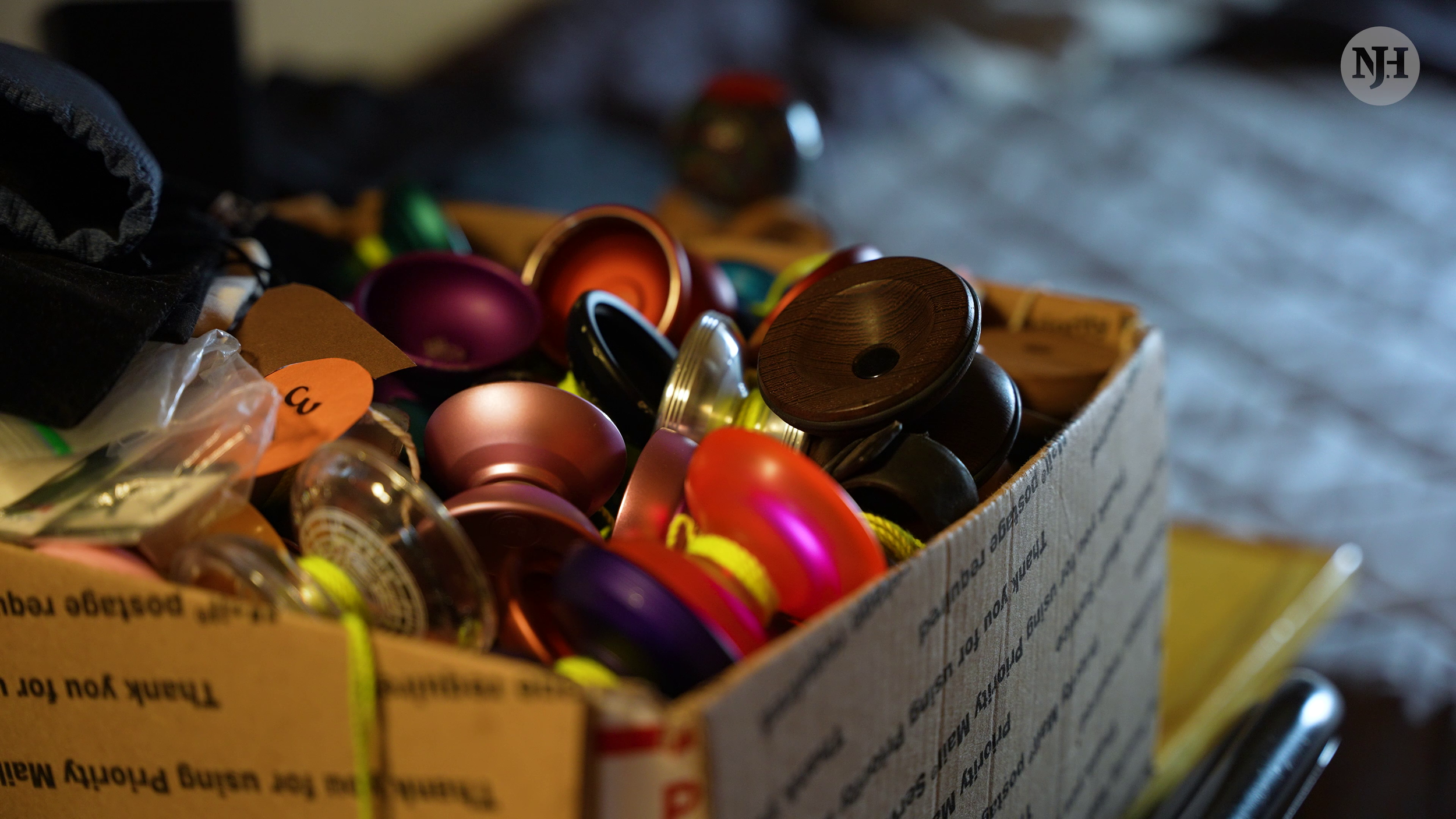Yo-yo
You may think of yo-yos as a child’s toy, but anyone can work to master the art of a yo-yo. There are endless tricks to be learned. Once you get the hang of a yo-yo and learn a few tricks, you can begin to freestyle and do the hobby your way. If you’re ambitious, there is also the opportunity to compete!
While yo-yos may seem intimidating and look like magic, they work through simple physics. The momentum of the yo-yo dropping creates energy for the yo-yo to continue moving upon the return. The yo-yo is attached to a string, which moves freely by spinning on an axle or ball in the center of the yo-yo. Think of a trampoline, the stronger your landing is on a trampoline, the higher you go – yo-yos fundamentally work the same way. But like a trampoline, it’s common for first-timers to think just dropping it will send you flying back up. You need to put some force which is where the term “throw” comes from in yo-yo. You “throw” the yo-yo to get that momentum.
—
Yo-yos come in all shapes and sizes. The hobby community has been crafting and testing different ways to customize a yo-yo to a person’s liking. Ultimately, it all comes to personal preference. First, it is easy to distinguish yo-yos based on material.
Plastic yo-yos are typically best for beginners, while aluminum yo-yos are recommended for more advanced players who are starting to attempt tricks because they are more agile and precise for yo-yo performance. These types of yo-yos retail for anywhere from $20 to $100.
Masters of the craft who are looking to compete in yo-yo performance may want to purchase a titanium yo-yo, which typically costs upwards of $100.
These differences mainly affect weight and how the yo-yo interacts with the string. As mentioned, plastic is certainly the place to start and if you’re enjoying the hobby, dive into the others. Fundamentally, your ability to do tricks is the same on all of them, moreso the feel is different. Similar to using different types of pens – you’re still writing either way.
However, another major distinction in types of yo-yos is whether they are responsive or unresponsive.
Responsive yo-yos will return to the player's hand with a small tug on the string. They can “sleep,” or rest at the bottom of the string, for about 30 seconds before returning to the user's hand.
Unresponsive yo-yos will NOT return to the player's hand with a tug of the string. These yo-yos can sleep for a long time, which can be advantageous for performing tricks; however, they will not return to the hand unless you perform a maneuver called a “bind” to make them return to the hand.
—
There are different types of yo-yo play, ranging from 0A to 5A. 0A and 1A are the most common.
0A encompasses yo-yo play with responsive yo-yos
1A describes single-handed unresponsive yoyo play. This is the traditional, modern yo-yo play.
2A and 3A yo yo play are types of two-handed yoyo play, the former being with responsive yoyos and the latter being with unresponsive yoyos.
4A and 5A are more unique types of yoyoing where the yoyo is not attached to either a string or the user's hand.
—
If you want to be guided through learning the ropes of yo-yoing, check out the YoYoExpert’s learn section or the Skill Addicts app. You can also check out the Reddit thread R/Throwers to join a lively community of yoyo lovers.






Discover more of Nate’s tricks @watenade.fd
